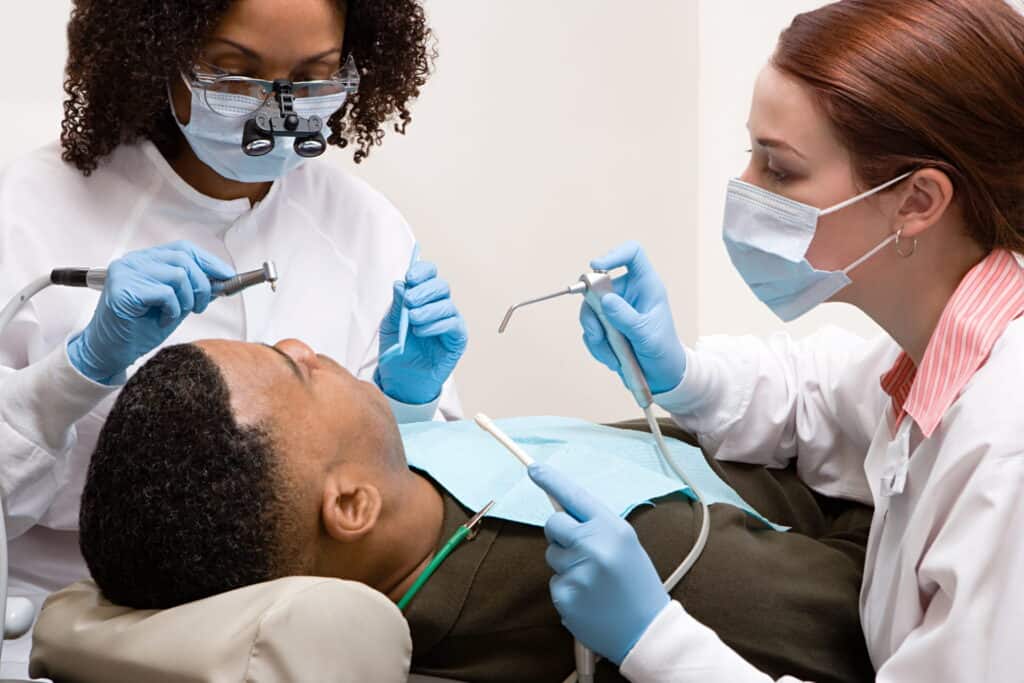Maintaining healthy teeth and gums takes more than a toothbrush and floss. Knowing how often you should see a dentist depends on several personal factors that go beyond the usual twice-a-year schedule. Individual needs shift based on health, habits, and history, making it important to understand the reasons behind those dental appointments. The Dental Krewe explains, “There’s no one-size-fits-all approach to dental care because every smile tells a different story.”
1. Dental history influences dentist visits
People with a track record of dental problems often need checkups more frequently. A patient who’s had several cavities, root canals, or gum disease can’t afford to skip regular visits, and once dental problems start, they tend to resurface faster than expected. For example, someone with a history of crowns and fillings knows the drill—literally—and stays on top of appointments because they’ve learned the hard way how fast things can go wrong.
- According to the CDC, about 90% of adults experience at least one cavity in their lifetime.
- Past gum disease increases the risk of tooth loss if not closely monitored.
- Dental work like bridges and implants needs regular inspections for durability.
2. Oral hygiene habits affect dentist schedule
Good oral hygiene habits can help stretch the time between visits, but only if they’re consistent. A person brushing twice a day, flossing carefully, and rinsing with mouthwash builds a strong defense, but even small lapses open the door for plaque and tartar. Those who forget a night here and there often find themselves needing professional cleanings sooner than expected.
- The American Dental Association (ADA) confirms flossing daily removes plaque that leads to cavities and gum disease.
- Poor brushing habits result in buildup that hardens into tartar, requiring removal by a professional.
- Using fluoride toothpaste strengthens enamel, protecting against tooth decay.
3. Gum disease risk changes dental visits
Gum health determines how often a dentist visit is necessary because gum disease moves fast, sometimes without pain, making it harder to spot. Early stages like gingivitis are reversible, but ignoring symptoms turns manageable conditions into costly treatments. Someone with diabetes or a smoker needs closer monitoring since both increase the risk of gum disease.
- The CDC reports nearly half of adults over 30 show signs of gum disease.
- Smoking weakens gum tissue, increasing the chance of infection.
- Diabetes slows healing, making gums more vulnerable to inflammation.
4. Age impacts dentist appointment timing
Age brings different dental challenges, changing how often checkups should happen. Kids need more frequent visits because their teeth develop rapidly, and early cavities can sneak up fast. On the other hand, seniors face receding gums and dry mouth from medications, increasing their need for closer dental care.
- The National Institute of Dental and Craniofacial Research found that 42% of kids aged 2-11 have cavities in baby teeth.
- Older adults face higher risks of root decay as gums recede.
- Orthodontic care requires regular visits, especially during adjustment periods.

5. Diet and lifestyle increase dental visits
Daily choices, especially diet and lifestyle habits, have a lasting impact on oral health. Sugar-filled snacks, sodas, and tobacco accelerate decay and staining, forcing extra trips to the dentist. Someone drinking coffee all day or enjoying energy drinks may need more cleanings just to keep stains and enamel damage under control.
- CDC data shows nearly 50% of adults consume sugary drinks daily, raising cavity risks.
- Smokers are twice as likely to develop gum disease, per the American Academy of Periodontology.
- Acidic foods and drinks weaken enamel, leading to increased dental interventions.
6. Medical conditions affect dental checkups
Chronic illnesses often complicate dental health, requiring adjustments in visit frequency. Diabetes, osteoporosis, and cancer treatments all change how the mouth behaves—dry mouth, slow healing, and higher infection risks become part of the equation. Staying ahead of potential issues means dental visits become part of the medical plan, not just oral care.
- NIH data links osteoporosis to increased risk of tooth loss and jawbone deterioration.
- Chemotherapy and radiation can lead to dry mouth, increasing decay risk.
- Diabetics face a higher risk of serious gum infections like periodontitis.
7. Insurance and finances impact dentist frequency
Finances shape how often people actually get dental care, whether they need it or not. Insurance plans usually cover two cleanings per year, but some patients skip visits if they face out-of-pocket costs. Others use dental savings plans or visit community clinics to bridge the gap, balancing budgets while trying not to ignore their teeth.
- The American Dental Association reports that cost is a leading reason adults skip dental care.
- Many plans cover preventative cleanings but may limit coverage for complex treatments.
- Community dental programs offer low-cost care to those without insurance.
Balancing personal factors and dental health
The number of dentist visits a person needs changes based on a combination of personal health, habits, and circumstances. Some people build strong routines and keep their teeth healthy with fewer checkups, while others face constant battles against gum disease, cavities, and aging. The Dental Krewe shares that “Prioritizing routine dental care tailored to individual risks prevents larger, costlier issues down the road.” Predictable dental schedules don’t work for everyone, and ignoring the factors that increase visit needs leads to more serious oral health problems.

Key Takeaways About Dental Visit Frequency
- Past dental problems like cavities or gum disease increase the need for more checkups.
- Strong oral hygiene habits stretch time between visits but need consistency.
- Gum disease risk rises with age, smoking, and conditions like diabetes.
- Sugary diets, smoking, and acidic drinks mean more dental cleanings.
- Medical conditions like cancer and osteoporosis impact dental health.
- Insurance coverage and finances shape how often people see the dentist.
Frequently Asked Questions About Seeing a Dentist
Can poor dental hygiene increase health risks beyond the mouth?
Yes, poor oral health is linked to heart disease, stroke, and diabetes complications according to the CDC.
Do dental cleanings really need to happen twice a year?
For many, twice a year works, but people with gum disease or other risk factors may need visits every three to four months.
Is dental insurance worth it for people with good oral hygiene?
Even with good hygiene, dental insurance helps cover cleanings and unexpected problems like chipped teeth or cavities.
Does age affect how teeth respond to decay or damage?
Absolutely, children’s enamel is thinner and seniors experience enamel wear, both making them more prone to decay.
What’s the danger of skipping dental visits if there’s no pain?
Pain often appears late in dental issues, so skipping checkups risks letting small problems grow into major, expensive treatments.







